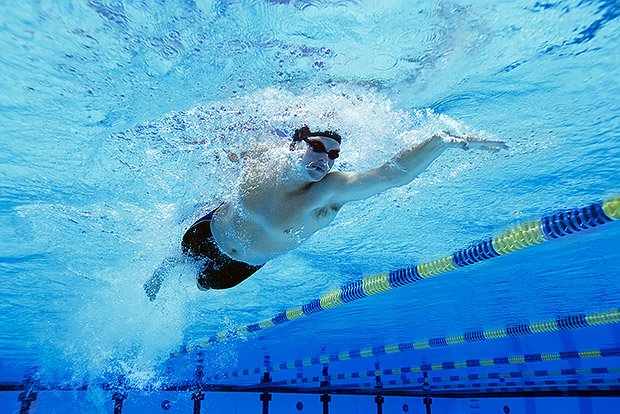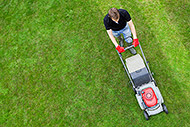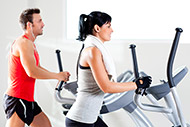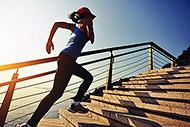
Easy On the Joints
When you are waist deep in the water, the body carries only 50 percent of your body weight. When the water is chest level, only 25 to 35 percent of your body weight is carried. Whether you are swimming laps or taking a deep-end aquatics class, water exercise gives your joints a break from the pounding that is common with other activities such as running, tennis, or kickboxing. It has also been shown to increase the use of joints and reduce joint pain in those with osteoarthritis.
Strength and Flexibility
Moving your body through the water, especially when swimming, requires that many joints extend through their full range of motion, improving flexibility. Water also provides about twelve times the resistance of air — making it a challenging, yet gentle, way to improve strength.
Cross-training
During water exercise, the body is challenged to work much differently than when exercising on land, which makes it ideal for cross-training. When swimming, you challenge the respiratory system because you must gain better control of your breathing pattern (particularly as your breathing rate increases). Your muscles are also challenged in new ways as you move your limbs to stay afloat.
Beginners to Advanced
Beginning an exercise program for the first time or restarting after a long break can be intimidating. Water exercise provides a way to ease back into fitness while reducing stress on the knees and ankles. Your heart rate will stay elevated as you keep the body in motion to stay above water. Working in speed intervals and increasing the length of your exercise session will keep you challenged as you build your fitness level.
Weight Loss
In a 30-minute workout, a 150-pound person will burn 359 calories doing the breaststroke, and 279 calories with either moderate-paced freestyle swimming or water jogging. Despite the calories burned, many research studies show that people who swim are at risk of gaining weight. This is because water exercise can increase appetite. The increase in hunger is attributed to the drop in body temperature that occurs during water exercise. Track your calorie intake to be sure you don’t eat more calories than your body needs to lose weight.
Sources



 5 Ways to Burn 300 Calories this Weekend
5 Ways to Burn 300 Calories this Weekend
 The Best Home and Garden Chores for Burning Calories
The Best Home and Garden Chores for Burning Calories
 5 Tips for Making Exercise a Habit
5 Tips for Making Exercise a Habit
 Best Ways to Stay Safe during Exercise in Hot Weather
Best Ways to Stay Safe during Exercise in Hot Weather
 11 Tips for Exercise Motivation
11 Tips for Exercise Motivation
 Signs You Need to Increase Exercise Intensity
Signs You Need to Increase Exercise Intensity
 Mistakes to Avoid When Setting Fitness Goals
Mistakes to Avoid When Setting Fitness Goals
 Essential Gear for Starting an Exercise Program
Essential Gear for Starting an Exercise Program

 Pinterest
Pinterest RSS Feed
RSS Feed